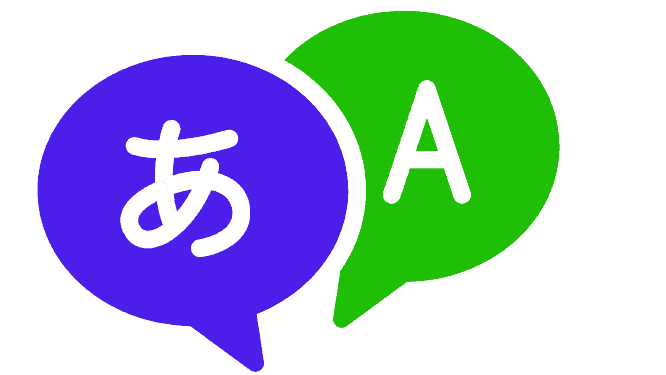Ready to unlock the world through language? LingQ and FluentU are two language learning giants, but which route is better for your journey? Explore the ultimate LingQ vs. FluentU combat as we compare their special features and help you in achieving fluency. It’s time to choose a language app and start a linguistic journey that will enable you to speak the languages of the world with confidence. Together, let’s explore, discover, and prevail!
LingQ vs FluentU Compared

- Number of Languages: 45
- Free Trial (or free version): Yes
- Speech Recognition: Yes
- Avg. Lesson Length: 5 Minutes
- Pricing: Starts from $12.99
- Money Back Guarantee: 30 Days
- Grammar Instruction: Better
- Live classes: Yes
- Progress Tracking: Yes
- Tests/Quizzes: Yes
LingQ Overview
LingQ is a language learning platform that emphasizes immersion and comprehension. With an extensive library of authentic texts in a variety of languages, users can read and listen to content that corresponds to their proficiency level. Students can create individualized vocabulary lists by highlighting and saving words or sentences they don’t understand using the innovative “lingQ” technology.
Through reading, listening, and engaging with the information, LingQ promotes active participation. Additionally, it provides vocabulary-building tasks using spaced repetition. Users can add their own texts to make learning more personalized. Although some may find the UI a little archaic, the emphasis on material diversity and exposure to real language makes it a useful tool for students looking to improve their reading and listening abilities.
My LingQ Experience
Both the LingQ app and website have exceeded my expectations in every way. Right from the start, I was greeted with an equally good user interface on both platforms, and navigation was incredibly smooth. German was the language I chose, and the voyage started without a hitch.
The emphasis on words in LingQ was one feature that caught my attention. It felt somewhat similar to Memrise in this regard. I got the chance to explore uncommon German terms and develop my very own “LingQs.” This individualized approach to vocabulary development was quite interesting.
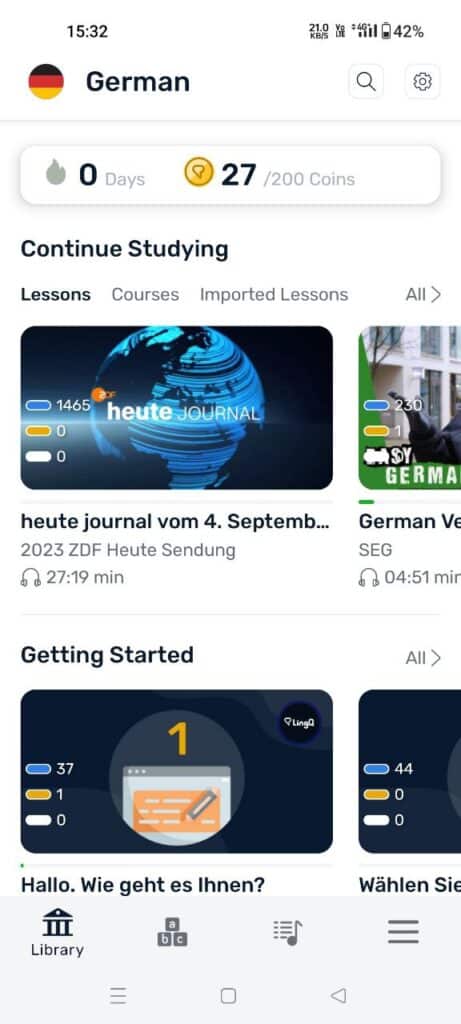
The dedication of LingQ to demonstrating to me how German words are employed in regular sentences was what actually set it apart. I was able to read these lines and simultaneously hear the words pronounced in their proper context, which substantially improved my ability to comprehend and pronounce what was being spoken.
It’s gamification features came as a welcome surprise. The program awards users with points, giving my quest to learn a new language a fun and encouraging twist. It inspired me to continue being consistent and learning.
LingQ also impressed me with its emphasis on improving pronunciation. The platform gave me the chance to listen to and read questions, which helped me improve my pronunciation.
The language application stood out for its large selection of modules, which were accessible to free users as well. Additionally, there were no annoying advertising to interrupt my studying process. It was obvious that LingQ was dedicated to continuously delivering good material.
It was a good feature to have forums built into the platform. I found myself chatting with other users about different facets of language study, creating a feeling of community.
I found the “challenge” option to be a really interesting feature. Setting language learning objectives, such as studying a language consistently for 30 or 90 days or memorizing 1000 words, was promoted by LingQ. It gave my educational career a sense of dedication and accomplishment.
One advantage was the accessibility of long-form audio information from native speakers. It gave me the opportunity to immerse myself in actual language use, which is beneficial for any language student.
Additionally, LingQ provided specific vocabulary and grammatical courses to provide a thorough learning experience.
LingQ Free vs. Premium:
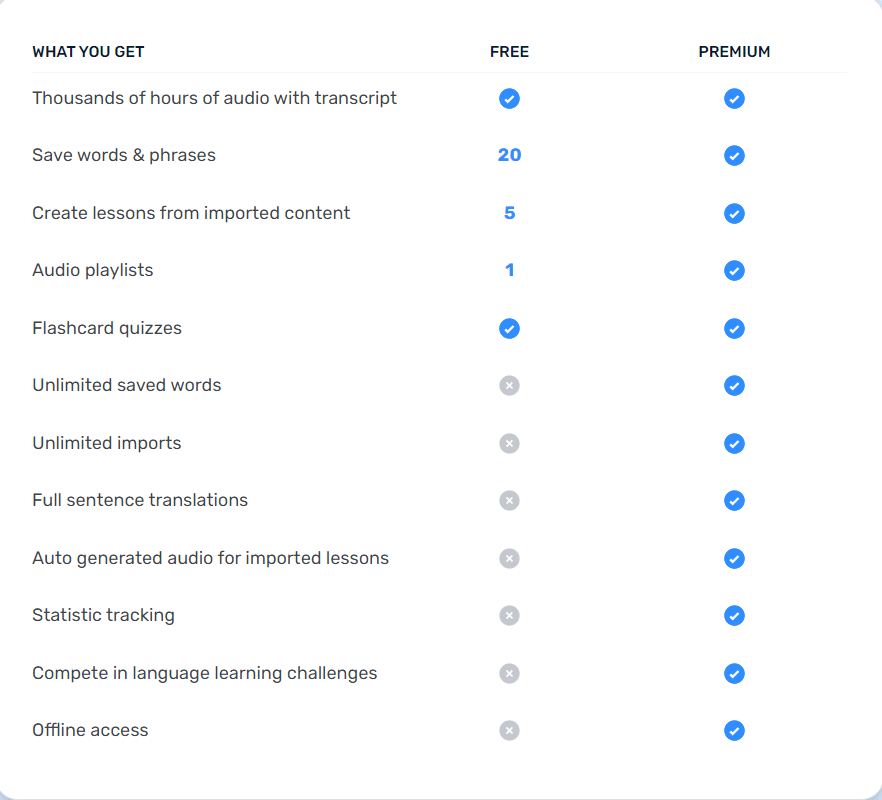
LingQ offers both free and premium plans:
- Free Plan: With the free plan, you can access a limited amount of content and features. It’s a good way to explore the platform and see if it suits your learning style.
- Premium Plan: LingQ also offers premium plans, which come with various benefits, including access to more content, unlimited LingQs (words to learn), and additional features like live classes and more in-depth analytics. The premium plans are designed to provide a more comprehensive and enhanced learning experience for those who are committed to language learning.
In conclusion, I have had a very wonderful time with LingQ. The program is a popular pick for language learners because to its user-friendly layout, emphasis on vocabulary, real-life sentence usage, gamification, and richness of information. Regardless of your level of proficiency, LingQ has something useful to give you.
Drawbacks
While my experience with LingQ has been largely positive, there are a couple of drawbacks worth mentioning:
First off, it sometimes seems as if the platform places less emphasis on in-depth material. While it succeeds at offering a variety of vocabulary and phrases, there were times when I wished for deeper explorations of certain subjects or concepts.
Second, LingQ only allows a maximum of 20 words to be kept as “LingQs” for free users. Although this limitation doesn’t negatively affect the learning process overall, it may be quite restrictive for those who wish to substantially construct their own vocabulary bank without purchasing a premium membership. Despite these small flaws, LingQ’s unique approach to vocabulary study and wide range of content options make it a useful language learning tool.
- Content Variety: LingQ offers a wide range of authentic content, including articles, podcasts, and more, allowing learners to explore various interests and subjects.
- Vocabulary Building: The “lingQ” system lets users save and review unfamiliar words, aiding in gradual vocabulary expansion through natural context.
- Language Diversity: LingQ supports 45 languages, making it suitable for learners interested in less commonly taught languages.
- Immersive Exposure: Reading and listening to content from native speakers provides an immersive language exposure experience.
- Personalized Learning: LingQ adapts to users’ reading levels and vocabulary, providing content that matches their proficiency.
- User-Generated Content: Learners can import their own texts, enhancing the platform’s content diversity and catering to individual interests.
- Progress Tracking: The platform tracks completed lessons and vocabulary growth, giving learners a sense of achievement and progress.
- Limited Speaking Practice: LingQ’s focus on reading and listening means that opportunities for practicing speaking skills are limited.
- Limited Structured Learning: While LingQ emphasizes content immersion, it might lack structured courses, which some learners prefer for a guided learning path.
- Quality Variation: The depth and quality of content can vary between languages, and some learners might encounter uneven course offerings.
FluentU Overview
FluentU stands out as an immersive language learning platform that uses real-world videos, like movie trailers, music videos, and news clips, to teach languages. The interactive content exposes users to authentic language use in context, aiding in listening and comprehension skills.
It offers interactive quizzes, subtitles, and translations with a focus on visual learning. The application offers customised suggestions based on user learning styles. The interface’s clean, contemporary design improves user experience.
While its material bank may be less than other platforms, FluentU’s concentration on multimedia and interactive learning makes it appealing to video-based language learners.
My FluentU Experience
My FluentU app and online experience has been excellent. A simple and responsive user experience that made navigating the site a delight welcomed me right away. I decided to learn Italian, and my language journey began seamlessly.
The remarkable library of video material available on FluentU covers a broad range of subjects, including daily life, the arts, culture, cuisine, health, travel, science, comedy, technology, and more. Due to the wide range of options, I was able to look into topics that actually interested me, which made learning interesting and practical.
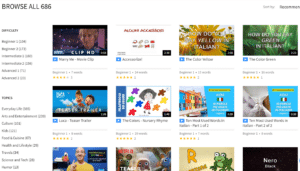
I was really delighted by the focus on vocabulary. It offers a list of all the terms used in each video along with their meanings. This feature makes it exceptionally handy to increase your vocabulary since it enables you to click on any word to learn its pronunciation, annotation, and translation.
FluentU further empowers students by permitting them to construct their own reference word listings. This individualized approach to vocabulary development turned out to be a really useful component.
The FluentU flashcards space gave me useful information in my target language. The variety of flashcards addressed a variety of usage situations, such as fundamental verbs, pronouns, family names, fundamental colors, body parts, and more. Each set of flashcards covered the subject in great depth, ensuring that the information was understood.
The inclusion of specific videos within the flashcards is one noteworthy aspect. These videos provide further context and explanation, reiterating the meaning and application of the terminology in a practical setting.
I was able to download lectures and tests using the mobile app, which provided another level of ease. When I needed to continue studying even without an internet connection, this option was helpful.
In conclusion, FluentU has been nothing short of amazing during my time there. It is a significant resource for language learners because to its user-friendly design, extensive video content collection, strong emphasis on vocabulary, and incorporation of real-world context via films. It provides an engaging and successful learning environment, regardless of your level of language proficiency.
Drawbacks
The first thing to note is that all of the videos on FluentU were imported from publicly available YouTube videos. It doesn’t have any in-house videos to teach the languages. Despite this, it offers a plethora of real information. Some users may prefer a more structured, in-house approach to content creation.
Second, since FluentU focuses mostly on video material, there isn’t a lot of text-based stuff accessible. This can be a drawback for people who want to supplement their language study with textual resources.
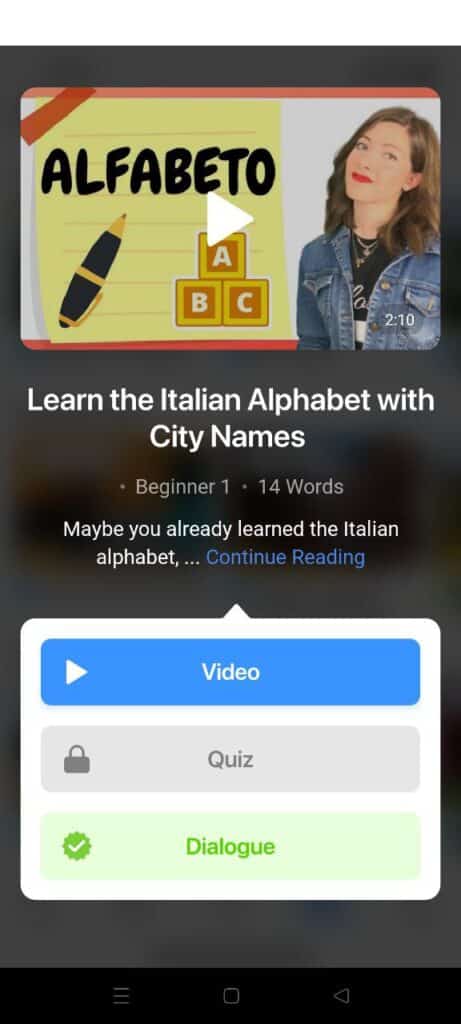
Additionally, unlike some other language learning applications, FluentU lacks gamification components. These components could give consumers with an additional level of engagement and drive.
At last, there aren’t many speaking exercises on FluentU. The platform does a great job at teaching listening and understanding, but it doesn’t provide as many opportunity to practice speaking. For students who desire to actively improve their spoken language abilities, this could be a disadvantage.
Despite these flaws, this language learning platform is still a useful tool for language learners, especially for those who choose an immersive and video-centric method of language learning.
- Video-Centric Learning: FluentU’s video-based approach offers an engaging and immersive way to learn languages through real-world context.
- Interactive Subtitles: Interactive subtitles provide translations and definitions in context, aiding comprehension and vocabulary acquisition.
- Adaptive Learning: FluentU’s adaptive algorithms tailor content recommendations and lessons based on individual learning progress.
- Visual and Auditory Learning: Visual learners benefit from the multimedia content, enabling them to learn through both audio and visual cues.
- Structured Learning Path: FluentU offers a curated path, guiding learners through lessons and ensuring a systematic learning journey.
- Comprehensive Progress Tracking: Learners can easily track their progress through detailed analytics, helping them understand their strengths and areas for improvement.
- Cultural Insights: Learning from authentic videos exposes users to cultural nuances, idiomatic expressions, and natural speech patterns.
- Limited Language Selection: FluentU offers content in only 10 languages, which might not cover all the language options learners are interested in.
- Narrower Content Focus: The platform’s emphasis on video content might not cater to those who prefer text-based learning or diverse content types.
- Absence of Pronunciation: This is the biggest con. FluentU lacks the microphone based speech practice. Every other language app in the market provides it (even in free-tier), but they don’t.
LingQ & FluentU Detailed Comparison
User Interface and Experience (UI/UX)
I found LingQ’s user interface to be usable but a little cluttered at first sight. The website and app’s navigation wasn’t as simple as I’d imagined. However, the range of content choices was astounding.
It was a big benefit to be able to read articles and listen to podcasts in my target language. I found the “lingQ” option to be quite helpful for expanding my vocabulary since I could bookmark new words and phrases. Yet, sometimes I wished for a more modern design and smoother navigation.
On the other hand, FluentU’s slick, contemporary UI attracted my eye right away. It was a pleasure to use the app since it was aesthetically pleasing and simple to use. I like the interesting real-world videos with interactive subtitles and the contextual learning opportunity.
The questions that were provided after each video were an excellent method to check my understanding. The platform’s capacity to adjust to my level of learning was unquestionably helpful, and being able to monitor my development kept me encouraged.
While LingQ’s variety of information was a plus in terms of user interface and experience, FluentU’s contemporary design and interactive method won me over. For me, it improved the efficiency and enjoyment of learning a new language.
Language Course Selection
LingQ offers an impressive range of 45 languages to choose from, which is a massive advantage. I appreciated the diversity, as it allowed me to explore languages I’d never considered before.
The bite-sized lectures, which lasted 5 minutes on average, were practical for urgent learning sessions. It allowed me the freedom to accommodate learning a language into my hectic schedule. However, the quality and depth of some courses varied, and I had to sift through to find the most engaging ones.

Even while FluentU only provides 10 languages, it appears to prioritize quality above number. The 12 minute class time on average seemed more thorough and substantive. My learning took on a new level because to the video-based method, which exposed me to language usage in context.
The complexity and richness of the courses were satisfying, despite knowing that there weren’t as many language alternatives as there were with LingQ. It seemed to be a more thorough method of language learning.
It’s many selections for language courses were interesting, particularly for students interested in specialized languages. Contrarily, even with fewer language options, FluentU’s video-centered, in-depth courses made language learning seem more meaningful and engaging.
Learning Methods and Techniques
LingQ impressed me with its emphasis on natural language exposure. Reading and listening to real material is the mainstay of its teaching methodology, which enables me to fully immerse oneself in the language.
The ability to “lingQ” unknown words allowed me to gradually expand my vocabulary. The activities that used spaced repetition also helped with language retention. But I discovered that my speaking practice needed some improvement, therefore I had to make up for it with other tools.
On the other hand, FluentU distinguished itself with its creative utilization of real-world footage. Learning languages became very relevant and fascinating, thanks to this visual method.
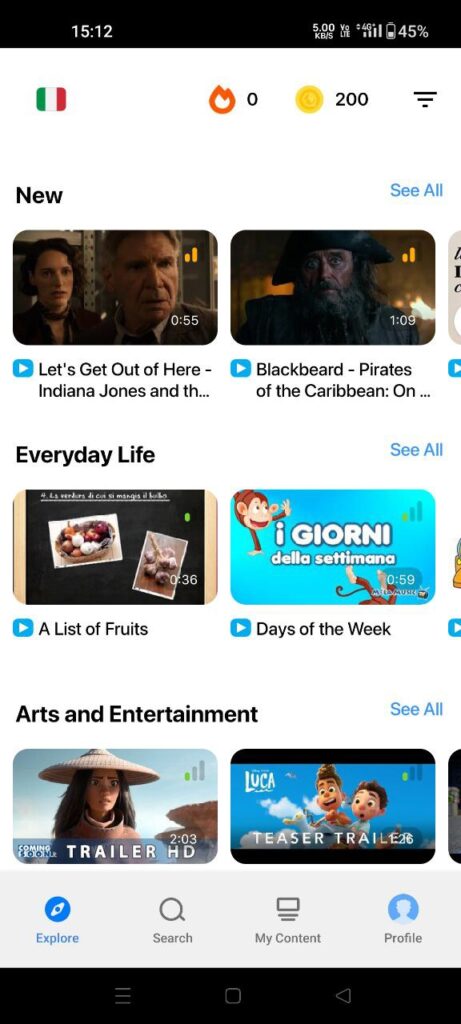
My hearing and comprehension abilities have improved as a result of watching videos with interactive subtitles. Each video’s accompanying quiz gave quick reinforcement. Despite the interactive aspect of the site, I thought that the speaking practice was still fairly restricted.
Regarding Learning Methods and Techniques, LingQ’s emphasis on reading, hearing, and vocabulary development proved useful for exposing learners to a wide variety of languages.
However, the video-based method used by FluentU offered a unique way to learn via context and visual clues. The decision mostly relies on your desired learning approach and the particular abilities you wish to develop. The two systems excelled in different ways.
Gamification and Engagement
LingQ uses its point system to provide a gamified aspect. I gained points for completing classes and interacting with the material, which made my learning experience seem more successful. It gave me a little inspiration to continue studying consistently. However, I hoped there were more interactive components to keep me interested since the gamification part seemed a little constrained.
In contrast, FluentU’s interactive video content excels in increasing engagement. After every video, there were questions and activities that tested my knowledge and memory. With this strategy, learning no longer seemed like a passive process but rather a participatory one.

I discovered that I eagerly took tests to assess how well I grasped the subject. It strongly induced a feeling of progress and participation.
However, gamification methods used by FluentU are not as advanced as those used by companies like Mondly or Rosetta Stone. They lack leaderboards, lyrical music, and attractive animations.
FluentU’s engaging exercises gave me a greater sense of active participation in the learning process, while LingQ’s point system provided an additional layer of incentive.
Pronunciation Practice
LingQ’s listening exercises were the main method for practicing pronunciation. I was able to focus on the pronunciation patterns of native speakers while reading along and listening to podcasts. However, I wished for more dedicated exercises that focused on improving my own pronunciation. The lack of interactive speaking exercises reduced the amount of pronunciation practice available.
On the other hand, FluentU provided a more thorough method of practicing pronunciation. I was able to concurrently hear native speakers and see their mouth movements, thanks to the interactive subtitles in the video material.

My pronunciation was much improved by using this visual assistance. Furthermore, the capability of replaying recordings and mimicking the speech patterns permitted a more practical method of honing pronunciation.
The speech recognition technology is absent, so you cannot utter the word and have FluentU record it and evaluate how well you performed. This is probably the biggest drawback. If you prefer learning via videos with pronunciation practice, Memrise is one great Fluentu alternative.
Progress Tracking and Analytics
FluentU offered basic progress tracking, showing completed lessons and vocabulary growth. Although seeing my learning history was useful, I wanted for more in-depth understandings of my strengths and areas that need development. It was a little difficult to successfully adjust my learning method due to the absence of comprehensive data.
On the other side, LingQ excelled in offering thorough analytics and progress tracking. It provided thorough summaries of my educational accomplishments, including the quantity of videos I watched, tests I passed, and accuracy percentages.
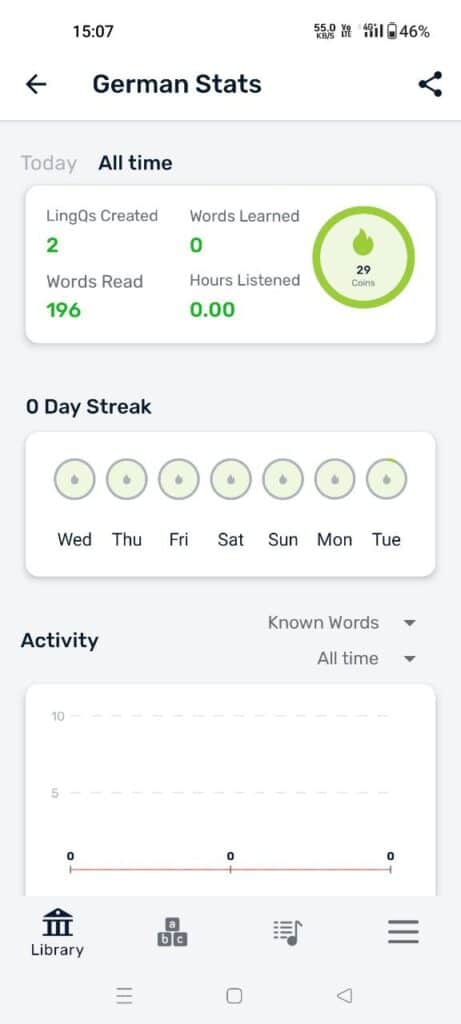
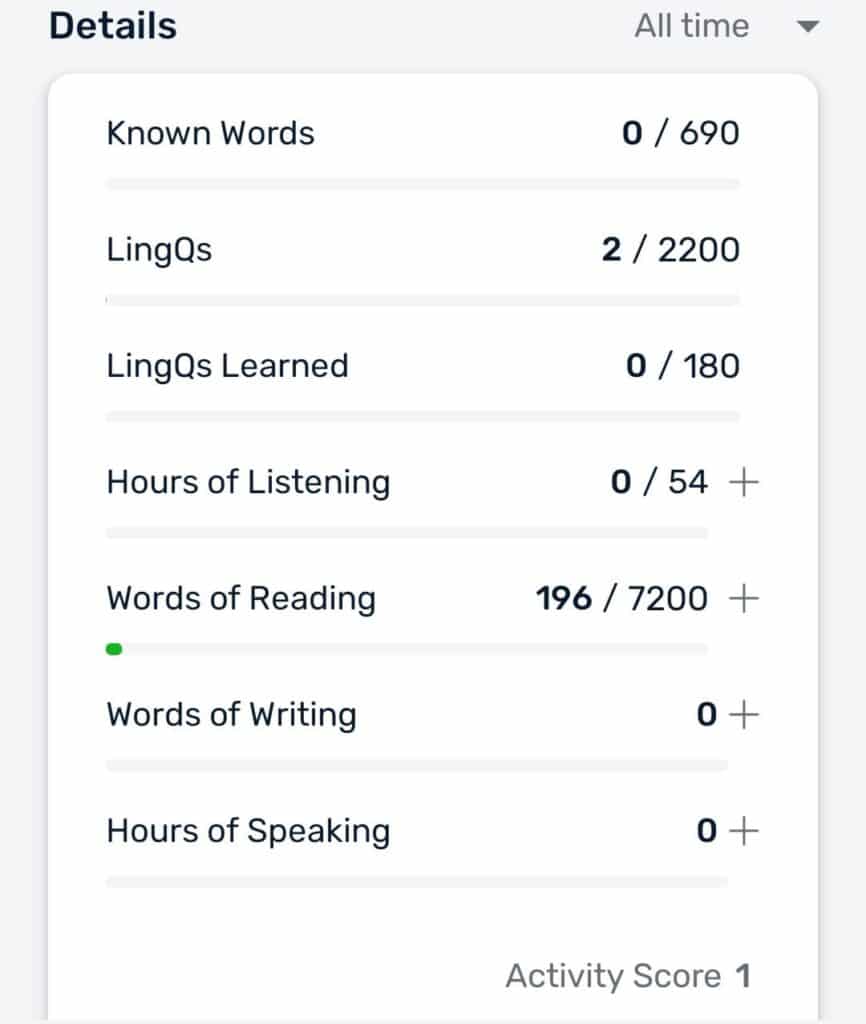
I was able to concentrate my efforts where they were required because to this degree of awareness, which also helped me identify my strengths and flaws. The analytics also helped me establish reasonable targets and monitor the development of my language skills.
LingQ’s in-depth analyses and breakdowns of its Progress Tracking and Analytics provide a more complete knowledge of my learning process. The progress monitoring offered by FluentU was a fantastic place to start, but LingQ’s analytics allowed for more in-depth self-evaluation and strategic planning.
Mobile App Features
LingQ’s mobile app offered convenience for on-the-go learning. I could use my smartphone to instantly access classes, read content, and listen to pronunciations. It was useful to have the option to mark and save challenging words or sentences for later reference. The navigation of the app is better, and the design is very modern.
The mobile app from FluentU stood out for its functionality and aesthetic. Mobile devices handled the interactive video material with ease. The current design made it simple for me to navigate through the videos and tests, and I appreciated how entertaining studying was as a result. The app’s user-friendly layout and flexibility to adjust to different screen sizes contributed to its overall popularity.
Also See: Deleting LingQ account permanently.
Vocabulary Building Tools
LingQ’s vocabulary building tools centered around the “lingQ” system, where I could save unfamiliar words or phrases while reading and listening to content. I was able to make personal vocabulary lists that I could study later. You can always reset your selected language or known words in LingQ.
The activities for spaced repetition also had the goal of reinforcing the terminology that had been learnt. Although this strategy was successful, I discovered that vocabulary learning was mostly context-based, and I yearned for more rigorous tasks to serve as reinforcement.
The vocabulary-building resources provided by FluentU were effortlessly incorporated into its video programming. Real-time translations and explanations were offered through interactive subtitles, which helped me understand foreign terms right away.
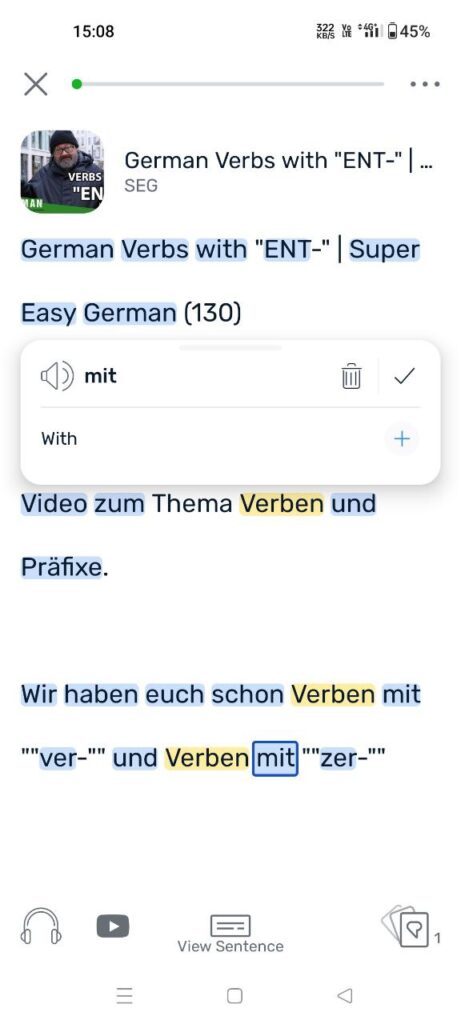
Each video’s vocabulary lessons were then recorded, making it simple to go back and review. I could see and hear the phrases in context, which made the approach seem more dynamic and visual, promoting learning and memory.
LingQ’s “lingQ” approach for vocabulary learning via context was successful in terms of vocabulary building tools. FluentU’s immersive video material monitored vocabulary with interactive subtitles to provide a more dynamic and all-encompassing method of vocabulary development. FluentU’s tools are visual and audio, which made learning interesting and memorable.
Offline Learning Options
Does LingQ work offline? Yes, the offline learning feature is available in the app. The functionality was limited, particularly centered on reading text without active internet access, even though I could store courses for offline usage. This let me examine previously stored information when I needed to, but it didn’t provide a truly dynamic offline learning experience.
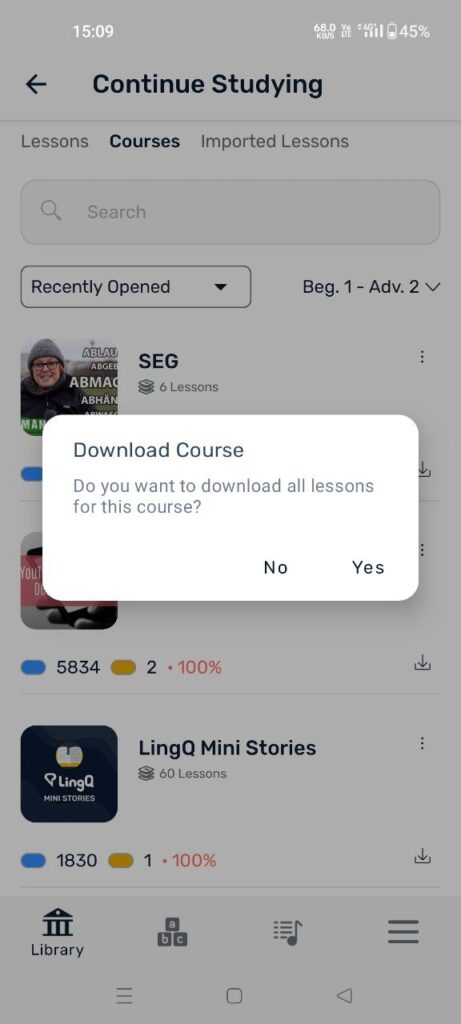
On the other side, FluentU offered more flexible offline learning options. For offline usage, I can download interactive subtitles and videos. Even when I wasn’t connected to the internet, I was still able to continue honing my listening and comprehension abilities because to this. I really appreciated the increased flexibility of being able to interact with videos and subtitles offline.
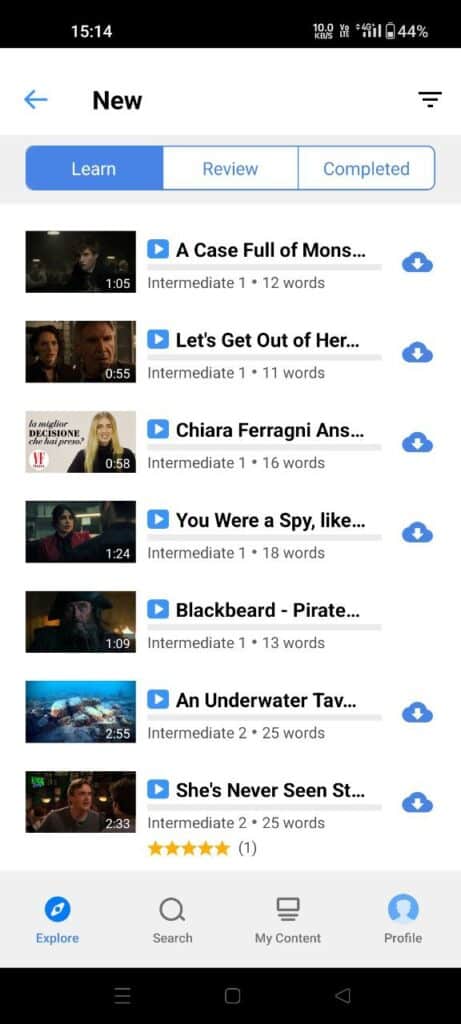
Translations
The translations function in LingQ was mostly concerned with vocabulary. When I came across a new term, I could immediately understand how it was translated within the context of the text.
Without having to consult another dictionary, this made it easier for me to comprehend the meaning. The translations, meanwhile, sometimes only covered a few words or brief sentences, and I missed having access to more thorough explanations.
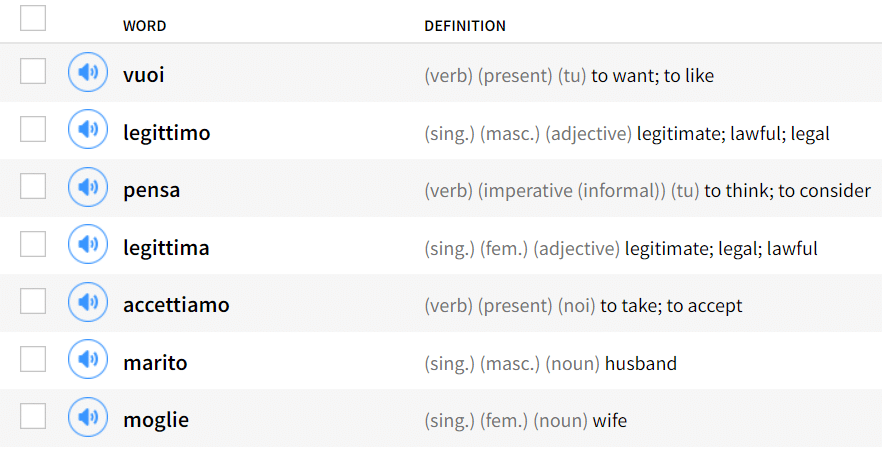
The interactive subtitles of the video included FluentU’s translations. In a video, if I came across a new term or phrase, I could click on it to discover the definition, further context, and use examples. I was better able to grasp the language since I could see how words were employed in different contexts.
Compared to LingQ’s exclusively vocabulary-focused translations, FluentU’s contextual translations via interactive subtitles provided a more thorough language learning experience. I was able to comprehend words better, thanks to FluentU’s method after learning how they fit into phrases and conversations as well.
Pricing
| Plan | LingQ Price | Languages | FluentU Price | Languages |
|---|---|---|---|---|
| 1 Month | $12.99 | 45 | $29.99 | 10 |
| 6 Months | $71.94 | 45 | – | – |
| 12 Months | $107.88 | 45 | $96 | 10 |
| 24 Months | $191.76 | 45 | – | – |
Compared to FluentU, LingQ provides more reasonable price options with its 6-month and 12-month subscriptions. However, it’s vital to remember that LingQ has access to a wider range of 45 languages, making it a more cost-effective option if you’re interested in less widely spoken languages. FluentU only offers material for 10 languages. LingQ has 30 days within which you can cancel & get full refund, whereas FluentU has 20 days money back guarantee.
LingQ’s lower price levels provide excellent value when considering Return on Investment (ROI), particularly for students who want to study many languages or have a longer learning path. FluentU may be more appealing to people seeking for a particular language or a highly visual and interactive learning experience because of its handpicked material and interactive videos.
None of them offer you a Lifetime deal. For those who want organized training and face-to-face interaction with teachers, LingQ now offers premium plus subscriptions with live classes. FluentU doesn’t have any live classes plans.
What are the key differences between these apps?
One notable difference between the two platforms is their approach to language variety. A broad variety of languages are available on LingQ, which is perfect for those who want to study lesser-known languages or learn about other linguistic cultures. Conversely, FluentU concentrates on a limited number of languages, which can be more interesting to anyone looking to fully learn a particular language.
The nature of their content is another area of difference. While FluentU has a strong emphasis on video-based learning, LingQ provides a wider variety of material formats, including essays and podcasts. For visual learners and those who value studying in a more immersive, real-world setting, FluentU’s video-centric approach may be a game-changer.
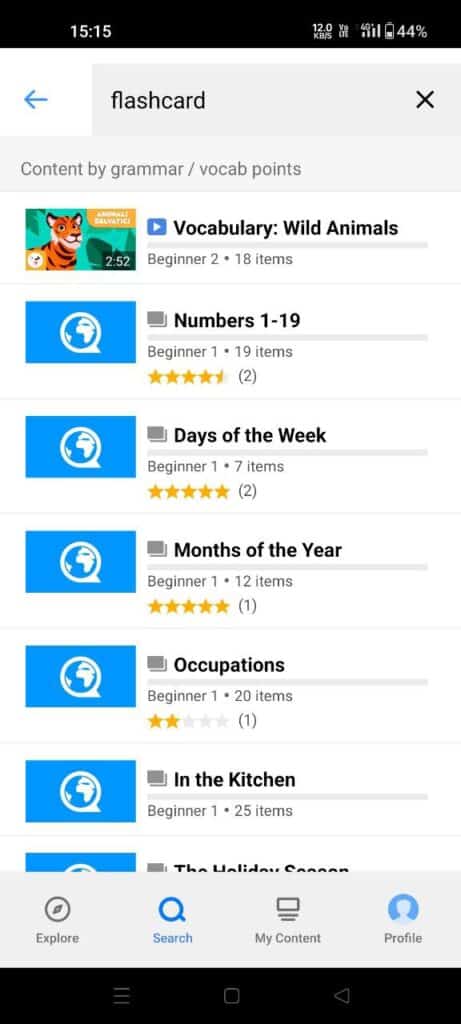
LingQ prioritizes user-generated material when it comes to community and social elements, enabling students to import texts of their choosing. Learners looking for specialized subjects or particular language use might discover this community-driven information useful. FluentU has a vast amount on YouTube video material and places more of an emphasis on selected, structured video content.
The choice ultimately comes down to your language objectives, learning preferences, and the particular features that appeal to you, even if LingQ and FluentU each have their advantages. These distinctions might help you choose the best language learning platform, whether you value a greater language variety, a more immersive video experience, or community-driven material.
Lingq is best for whom? & how?
For language learners who appreciate genuine immersion and are driven by exposure to real-world material, LingQ is a great option. It’s especially useful for those who like reading and listening as integral parts of their educational process. It could be a great match if you appreciate learning about a variety of subjects, examining diverse writing styles, and listening to native speakers in natural environments.
The platform’s “lingQ” function, which lets you store and study unfamiliar words and phrases, is great for progressively expanding vocabulary while interacting with real content. LingQ’s method suits learners who prefer context-based learning and immersion in the language over conventional lectures.
LingQ is a great option for people interested in learning less often taught languages because of its strong point of linguistic variety. Therefore, It’s content diversity, immersive approach, and breadth of languages can provide a beneficial and rewarding language learning experience if you’re an independent learner looking to improve your reading and listening abilities via genuine content.
Fluentu is best for whom? & how?

FluentU is an excellent choice for language learners who thrive on visual and interactive learning experiences. FluentU may be the ideal choice for you if you prefer contextual learning and learn best when exposed to multimedia information, such as videos.
The platform is especially useful for those who wish to enhance their listening and understanding abilities in environments that are natural. It’s video-based method will appeal to you if you want to learn from native speakers in authentic situations like movies, news segments, and conversations.
FluentU’s live subtitles, which translate and explain words as you watch, are especially helpful for people who want to understand what words mean in their natural context. This function concurrently improves vocabulary and understanding.
Furthermore, It provides a guided learning experience if you value having a planned route and a well chosen collection of information. You will always be studying at the proper speed.
For visual learners who like to learn via interesting video material, contextual knowledge, and interactive activities, FluentU is the perfect option. It is very useful and enjoyable tool on your language learning path if you value an immersive and multimedia-driven approach to language learning.
LingQ user Feedbacks
Multiple users have lauded the originality of the LingQ app, emphasizing its distinctive approach to language learning. They acknowledge that the initial design may be a bit confusing, but that it facilitates the learning process once understood. The primary concept involves continuous reading, with unfamiliar terms being added automatically to a review database for repetition. However, some users wish the free tier had a higher word limit.
One reviewer believes that LingQ Premium is an exceptionally valuable instrument for simultaneously learning multiple languages. They appreciate that each language offers identical stories in various courses, facilitating comparisons and enhancing language acquisition. This feature enables users to read identical content in multiple languages, which can be especially beneficial for language learners pursuing multilingual abilities.
The concept and user-friendly perusing and listening features of the application are highly praised. Users also value the option to integrate external media and narratives into the learning experience without a hitch. However, the app has some limitations compared to the browser version. It appears that the app lacks features such as tutoring, community forums, spending tokens, and perusing distinct words, leaving some users wanting more.
FluentU user Feedbacks
Users enthusiastically praise FluentU as the “best language app” They appreciate its immersive approach, especially those who have intermediate language skills and seek to move beyond basic memorization and flashcards.
FluentU distinguishes itself by providing authentic content, such as YouTube videos and authentic dialogues, and allowing users to control their focus. This method is regarded as invaluable for language learners who are sincerely committed to mastery.
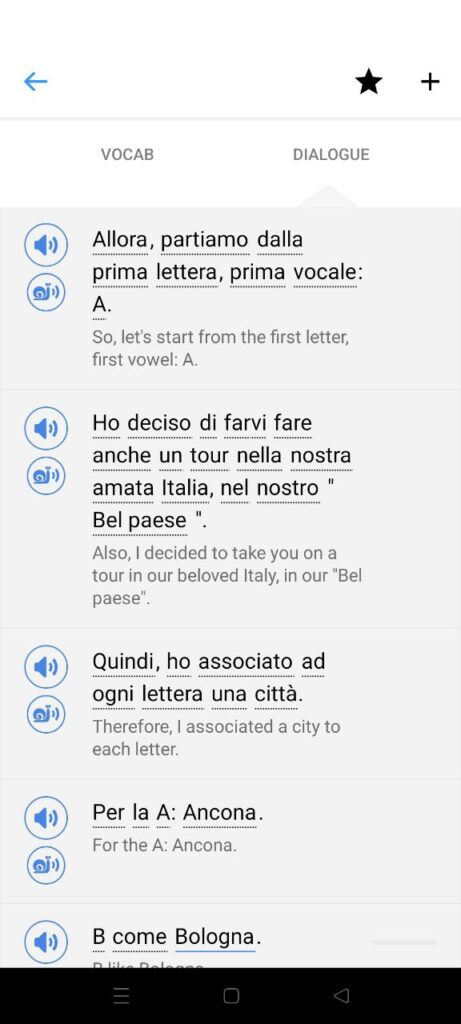
Another user, who acknowledges their need for substantial assistance and prefers not to memorize, considers FluentU to be an excellent product. The wide variety of recordings showcasing real individuals speaking the target language in a variety of contexts is highlighted as exemplary reinforcement. The ability to construct and examine customized flashcard groupings is recognized for its versatility. As a valuable feature, the platform’s emphasis on elucidating and re-pronouncing each word at the user’s command is highlighted.
In another testimonial, FluentU is credited with assisting a user close in voids in their conversational Spanish language skills. The platform’s visual learning method has been lauded as the most effective among various language courses. The playback options for videos, allowing for repeated listening and repetition, are regarded as highly beneficial for visual learners. In addition, the exams are regarded as a valuable review instrument that strikes the ideal equilibrium between speed and curiosity.
FluentU vs LingQ Summary
LingQ
Total Languages: 45
Starts from: $12.99
30 Days Money Back Guarantee
What did We like?
LingQ helps you explore the universe of languages! Immerse yourself in authentic content from more than 45 languages, and read articles and listen to audio that correspond with your interests. Utilizing the innovative ‘lingQ’ system, you can effortlessly monitor your progress and build your vocabulary in a natural manner. LingQ is an ideal option for independent language learners who enjoy learning lesser-known languages due to its varied content and gradual vocabulary expansion. Involve yourself in an immersive language learning experience with LingQ and achieve fluency through natural exposure.
- Content Variety
- Vocabulary Building
- Language Diversity
- Immersive Exposure
- Personalized Learning
- User-Generated Content
- Progress Tracking
- Limited Speaking Practice
- Limited Structured Learning
- Quality Variation
What did We like?
FluentU offers a language-learning experience unlike any other! Immerse yourself in videos that bring languages to life. Learn through context in the real world with interactive subtitles, effortlessly enhancing your comprehension and vocabulary. It teach you every phrase with translation & pronunciation with use case that you encounter in any video. If you are a visual learner desiring an immersive experience, FluentU’s curated content and dynamic video-based approach make it an excellent choice for confidently mastering foreign languages.
- Video-Centric Learning
- Interactive Subtitles
- Adaptive Learning
- Visual and Auditory Learning
- Structured Learning Path
- Comprehensive Progress Tracking
- Cultural Insights
- Limited Language Selection
- Narrower Content Focus
- Absence of mic-based pronunciation
Yes, both LingQ and FluentU offer multi-device compatibility. You can access your learning content seamlessly across different devices, ensuring a flexible learning experience.
Absolutely. Both LingQ and FluentU cater to learners of various proficiency levels, including beginners. Their content is designed to accommodate different skill levels, making language learning accessible to everyone.
Yes, both platforms provide progress tracking tools and analytics. You can monitor your completed lessons, vocabulary growth, and other achievements. This helps you visualize your progress and areas for improvement over time.
While an internet connection is required to access new content and features, both LingQ and FluentU offer certain offline capabilities. You can download lessons or videos to continue learning in offline mode, ensuring uninterrupted learning even without a connection.
LingQ and FluentU are both language learning platforms, but they differ in their approach and content. It focuses on extensive reading and listening with a wide range of content. FluentU, on the other hand, uses video content for immersive learning. The choice between them depends on your learning style and language goals.
LingQ offers both free and premium plans. Whether it’s worth paying for depends on your commitment to language learning. Premium plans provide additional features and content, making it a valuable investment if you’re dedicated to improving your language skills.
Yes, LingQ is a respected language learning app known for its extensive content library and unique approach to vocabulary acquisition. It’s particularly favored by independent learners who enjoy reading and listening to authentic content in their target language.
LingQ supports a wide range of languages, currently offering content in 45 different languages:
Yes, LingQ has offline capabilities. You can download lessons and content for offline use, allowing you to continue learning even without an internet connection.
LingQ is a valuable tool for language learning, but achieving fluency depends on various factors, including your dedication, practice, and exposure to the language. It can be a significant part of your language learning journey, but fluency often requires a combination of resources and practice.
Yes, LingQ offers a free plan that allows users to access and explore a limited amount of content. Premium plans with additional features are also available for those who want to enhance their learning experience.
FluentU does offer a free trial period for 14 days, but it is not entirely free. After the trial period, users typically need to subscribe to a premium plan to access the full range of features and content.

Meet Bill, a French language teacher and blogger who specializes in testing various language learning apps. He has been teaching French for nearly 4 decades and holds a Bachelor’s degree from Manhattanville College. With a passion for technology and how it can enhance language learning, Bill has spent years testing and reviewing different language learning platforms. His blog provides valuable insights into the pros and cons of each app, as well as tips for language learners of all levels.
